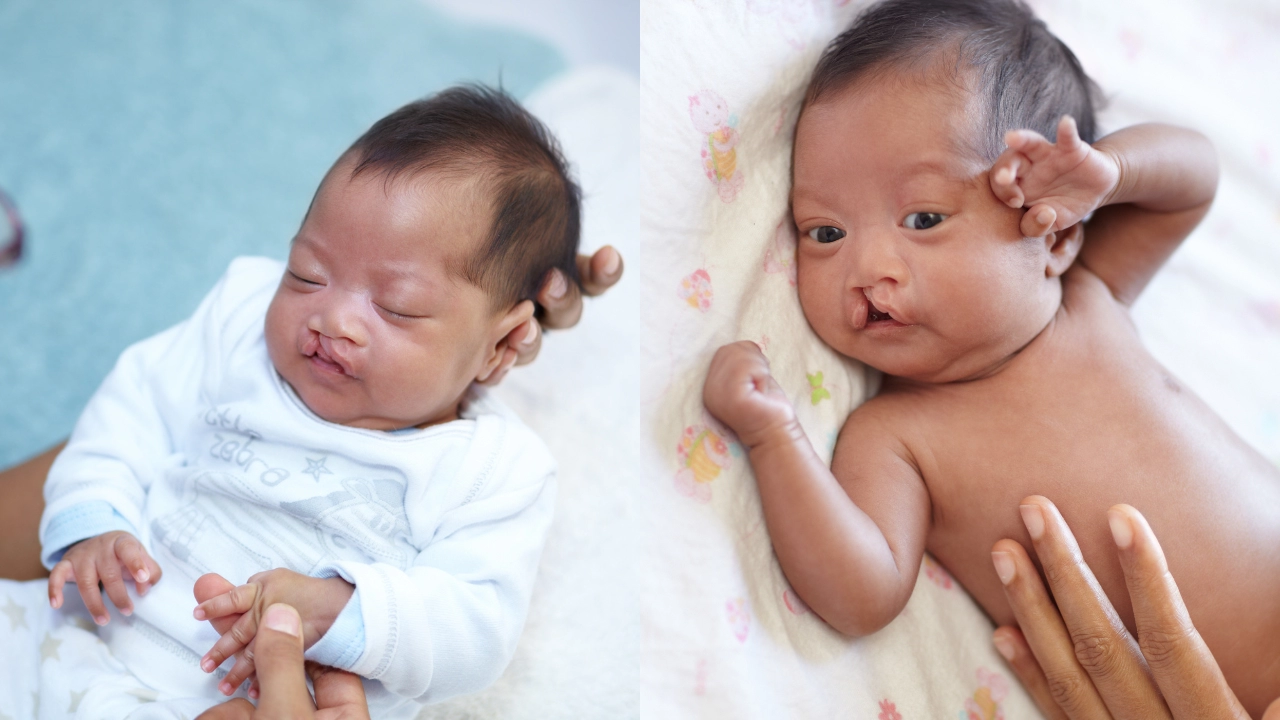Cleft lip, either with or without cleft palate are the most common craniofacial defects in newborns globally. Around 35,000 children are estimated to be born with cleft lip and palate every year in India. Some newborns are born with both cleft lip and palate, but some babies may only have one. These congenital conditions present significant challenges that extend beyond cosmetic concerns.
Children born with these disorders encounter frequent feeding problems because they find it difficult to suck due to lip or palate holes, which results in insufficient nourishment. Cleft lip and cleft palate are usually a result of unknown causes. You cannot avoid these conditions. A mix of genetic and environmental variables is thought to be the cause of clefts by the majority of scientists.
To understand more, we tap three experts who share everything you need to know about cleft defects among newborns.
“Anatomical defects impair their capacity to create sounds appropriately which in turn may result in speech and language development delays,” says Dr Meena J, Senior Consultant in Pediatrics and Neonatology at Aakash Healthcare, New Delhi.
It seems that if a parent, sibling, or other family has had the issue, the likelihood of clefting in a baby is higher. “A drug that a woman may have taken while pregnant might be the source of another issue,” she says. Surprisingly, acne treatments that contain accutane, anti-seizure/anticonvulsant medications, and methotrexate—a medication frequently used to treat psoriasis, arthritis, and cancer—are among the medications that have been linked to cleft lip and cleft palate.
“Furthermore, viral or chemical contamination during the fetus' development in the womb can also result in cleft lip. Certain factors, such as smoking during pregnancy, having type 1 or type 2 diabetes before conception, and using certain epilepsy drugs during pregnancy, have been linked to an increased chance of having a child with an orofacial cleft,” says Dr Meena.
Early Intervention is Key
Addressing cleft lip and palate requires early intervention says Dr Vijay Sharma, Associate Director in Paediatrics at Asian Hospital, Faridabad. The child should be seen by a paediatrician and ENT/ plastic surgery team to plan the surgical management and address feeding issues.
“In addition to surgical procedures, speech therapy can significantly enhance the development and communication abilities of these children. Furthermore, the effects of cleft lip and palate extend beyond one's physical well-being. These circumstances may also result in social and psychological difficulties that impair the child's social relationships and sense of self,” he adds.
Children who have obvious differences may experience bullying and social stigma. Their mental health depends on offering them psychological help and creating a welcoming atmosphere.
Addressing Concerns
Speaking on the strategy to address the issue of cleft lip and palate, Dr Smita D'Souza, Consultant in Paediatrics, Jupiter Hospital, Pune says, that crucial actions are the need of the hour including raising maternal health knowledge, guaranteeing access to complete medical treatment, and raising understanding of the risk factors.
“Further investigation into the genetic and environmental factors that interact to generate these disorders may lead to improved preventative and therapeutic approaches,” she adds.
“In India, where this health issue is particularly pressing, collaboration between governments, researchers, and medical professionals is vital. Timely diagnosis, effective medical interventions, and ongoing support can dramatically improve the quality of life for affected children. These efforts will empower them to overcome the challenges posed by cleft lip and palate and lead fulfilling lives,” Dr Smita says.
By uniting efforts and resources, we can address the complexities of cleft lip and palate, ensuring that every child has the opportunity to thrive and succeed.
Get Latest News Live on Times Now along with Breaking News and Top Headlines from Health and around the world.

